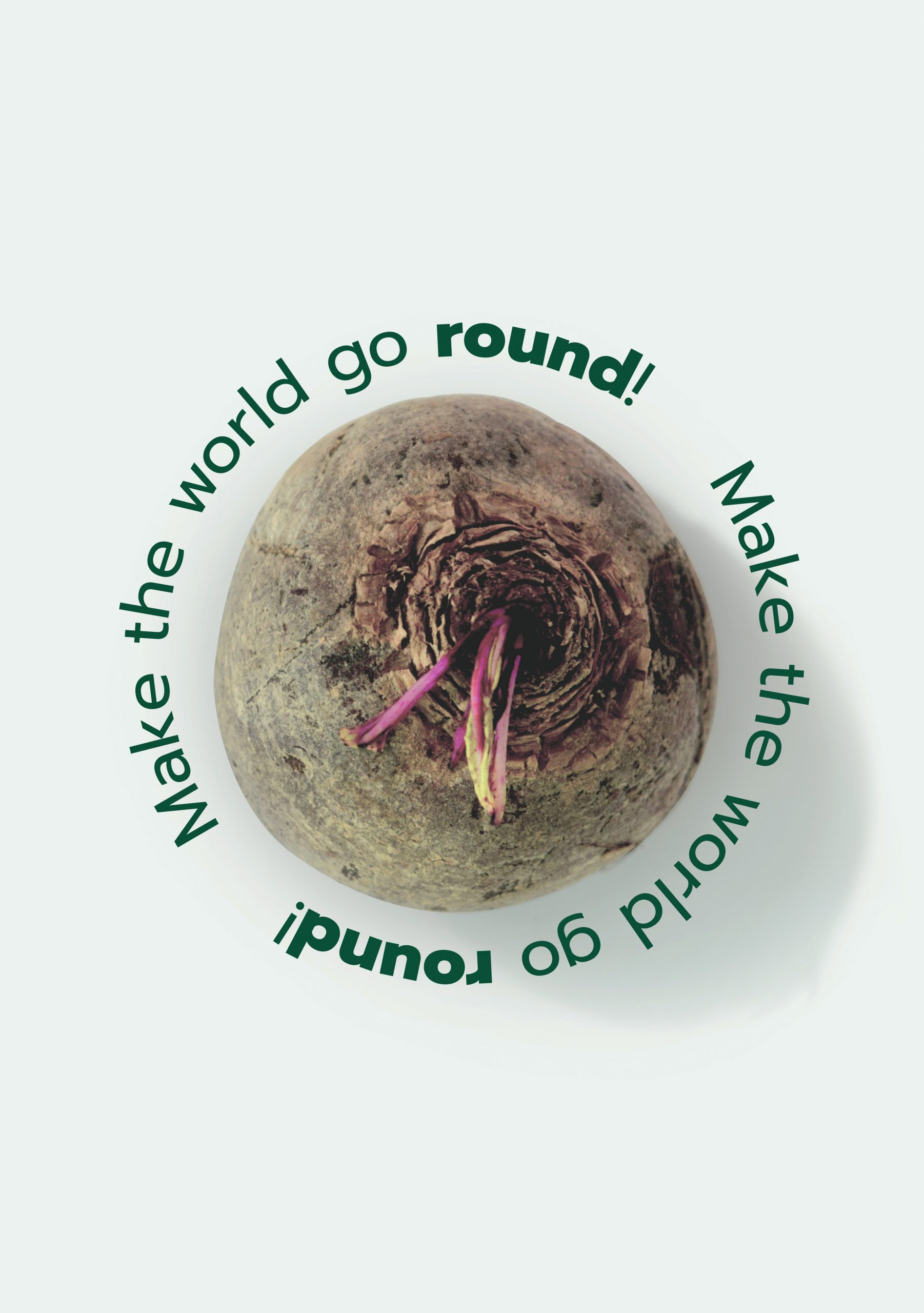Food conservation has always been a concern in humankind history.
But with the fourth food transition and the development of modern food industry, this issue had to comply also with safety, transport, storage, and very quickly marketing.
With the development of food brands and the rise of large scale distribution, modern food packaging provided a way to make food safe, reliable, shelf-stable and clean, and became also a powerful tool of communication.
Today, packaging in general has turned into a widely controversial subject. As most packagings have been designed to be single used and sometimes are not recycled, a huge amount of it is thrown, ending up in landfills or waterways.
Because so much food packaging (especially plastic) has ended up in waterways, the United Nations has declared the plastic pollution of oceans “a planetary crisis“.

According to a report published in july 2020 “Breaking the Plastic Wave: A Comprehensive Assessment of Pathways Towards Stopping Ocean Plastic Pollution”, the amount of plastic waste flowing into the ocean could triple in 20 years if no action is taken, which represents around 50 kilos of trash for every meter of coastline worldwide. And even with governments or big food companies commitment and promises to reduce or ban single use plastics, the same study states that this measures would only reduce this kind of contamination by 7% by 2040.
This report also identifies measures which could help to reduce by 80% the problem, using technology and ressources that are already existing today.
“There’s no single solution to ocean plastic pollution, but through rapid and concerted action we can break the plastic wave. As this report shows, we can invest in a future of reduced waste, better health outcomes, greater job creation, and a cleaner and more resilient environment for both people and nature.”
Tom Dillon, Pew’s Vice President for environment
But to operate this virtuous transition, should we consider the total abolition of packaging, especially in food sector
Packaging also allows to grant health safety, to transport, and make some products last longer on shop shelves. Not to mention the information, mandatory or not, which can figure on a product. As consumers want more transparency on their alimentation, with each country legislation and all the labels which multiply, food tags can become very wordy indeed.

As a designer, I started to feel more and more concerned about the role I could play to be a part of the solution. What practice could be implemented, what design mindset, what ressources could I have today if I had to work on a food packaging project?
Like mentioned before, most packaging are designed to be single used, this means that somehow the responsibility in the conception itself of the packaging has to be questioned in the first place.
That’s why I wanted to investigate different existing strategies which can be implemented to decrease food packaging environmental impact, especially at a design level.
1/ No packaging measures and Zero Waste movement
Sometimes a way to deal with a problem is to eradicate the source.
Governments are progressively adopting the interdiction of single use plastics. For example in Spain where 1.6 million tonnes of plastic packaging waste are generated each year, and only half of it is recycled, plastic wrapping for fruit and vegetable should be banned by 2023 to align with the european law… With exception of the ones with a risk of deterioration if they are sold lose. We can imagine that with this kind of measures, plastic packaging are far from disappear from supermarkets.
In this context of slow progress no wonder why some people turned to a « zero waste » way of life and fight packaging harmful consequences by simply avoiding to consume any packaged products. For the one applying it strictly, it means not to buy any processed products, consume very local fresh food to avoid damage caused by transportation and decay,
and a very good organisation. As much as I think that these are very good practices, they are still marginal or partially applied by most.
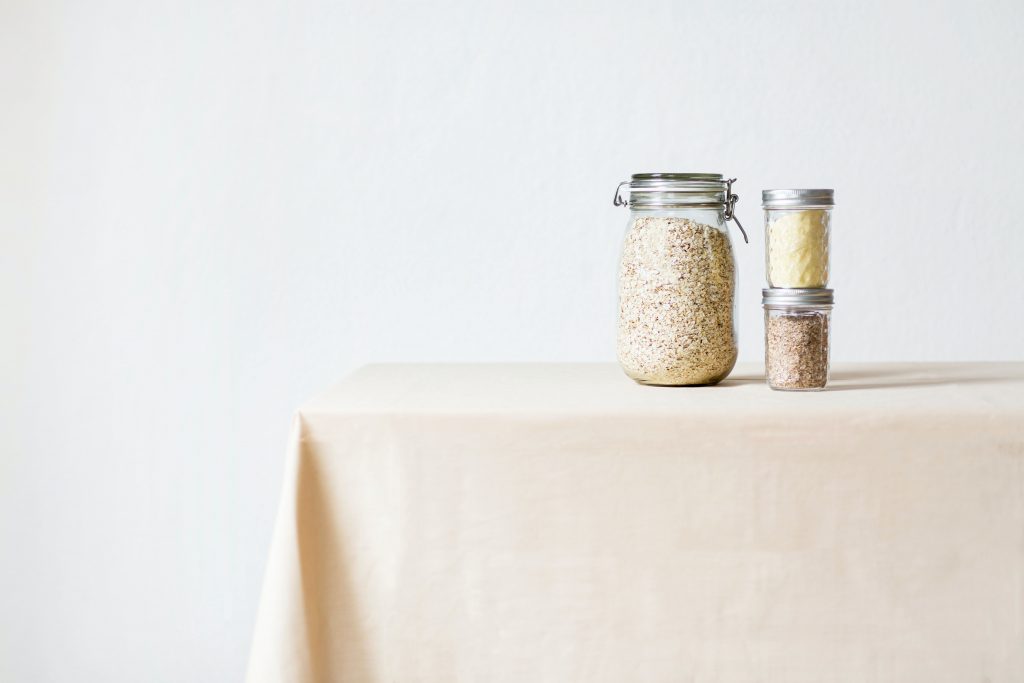
Pros: Governments efforts to reduce single-use plastic are starting to create a form of acknowledgment and allows consumers to be more conscious of the challenges and the crazy amount of plastic products we use without thinking about.
Cons: Being organised enough in a busy everyday life to deal with Zero Waste lifestyle can be challenging. It is a whole new process to implement. You can not shop everywhere also, and deal with short distribution circuits and local providers to get fresh food and avoid storage and transportation that could damage products without packaging.
Concerning the official measures, they remain not enough and limited. Just act at this level will never be enough to achieve the goal to reduce enough pollution by plastic.
2/ Edible packaging
Definition: edible means something that is suitable or safe to eat.
So the idea is basically food wrapped in food. It must be comestible and can be disposed as a fruit peel in general garbage or food compost if not consumed.
Notpla, magic packaging
From the Skipping Rocks Lab english start-up, Notpla is an edible material made from plants and seaweed. Since the beginning of the project in 2013 with the first version of Oooh! packaging for water, the start-up could develop their solution to propose this fun plastic alternative.

The Saltwater Brewery edible 6-pack ring holder
In 2016, the craft brewer brand Saltwater Brewery (Florida) decided to develop edible 6-pack rings. This innovation was
consistent with their eco-conscious consumers values (mostly surfers, fishermen or sea lovers). It was also a way to embrace circular economy: by using byproducts of the beer brewing process, this packaging goes beyond recycling and strives to achieve zero waste.
And last but not least, instead of doing a low budget communication campaign, this change was a statement for the brand who attracted in only 5 days after the launch of these rings 110 million social media views and over 3.5
billion media impressions.
Little memo: a plastic 6-pack ring holder takes 450 years to biodegrade itself in nature and such item is a well-known threat to wildlife.
Pros: Edible food packaging quashes off the typical waste cycle and doesn’t entail any recycling. Edible packaging is meant
to be biodegradable and thus, there is no chance that it would end up filling up recycling centers or landfills.
Cons: First here’s the problem of human nature; some people presume that since their packaging would disappear in nature, throwing it anywhere is normal. The United Nations noted in a report, “Labelling a product as biodegradable may be seen as a technical fix that removes responsibility from the individual, resulting in a reluctance to take action.” And then there is also the issue of consumers being reluctant to eat their cutlery or their food wrapping.
What’s more is that they can be skeptical about the sanitary part of the edible packaging, whether it protects the food from contamination as regular packaging does.
3/ Compostable packaging
Definition: A product that is “compostable” is one that can be placed into a composition of decaying biodegradable materials, and eventually turns into a nutrient-rich material. It is almost synonymous with “biodegradable”, except it is limited to solid
materials and does not refer to liquids.
Composting occurs in nature every day as fallen leaves and tree limbs biodegrade into the forest floor.
It’s very much on purpose that I use this adjective instead of biodegrable, as common sense tells us that any any plant-based, animal-based or natural mineral-based material will ultimately biodegrade, even if it takes centuries. I won’t go too much in details about this term which is today source of a lot of confusion and sometimes biased communication.
If you are already curious to dig in this subject already, I recommend this article.
SlowMov Coffee packaging by Nuria Vila
In 2020, I had the chance to participate to a Sustainable Design Workshop in BAU given by Nuria Vila.
Nuria has always had at heart to apply sustainable practices in her work, and she is also implied into research projects or
interdisciplinary collaborations to develop new solutions for her projects. In 2018 she was contacted by SlowMov, a coffee brand based in Barcelona. She developed a coffee packaging made of compostable material.
But to go further with a circular design mindset, she also decided to take advantage of the coffee waste and to turn it into an ink to print the packaging thanks to Coyote Atelier.
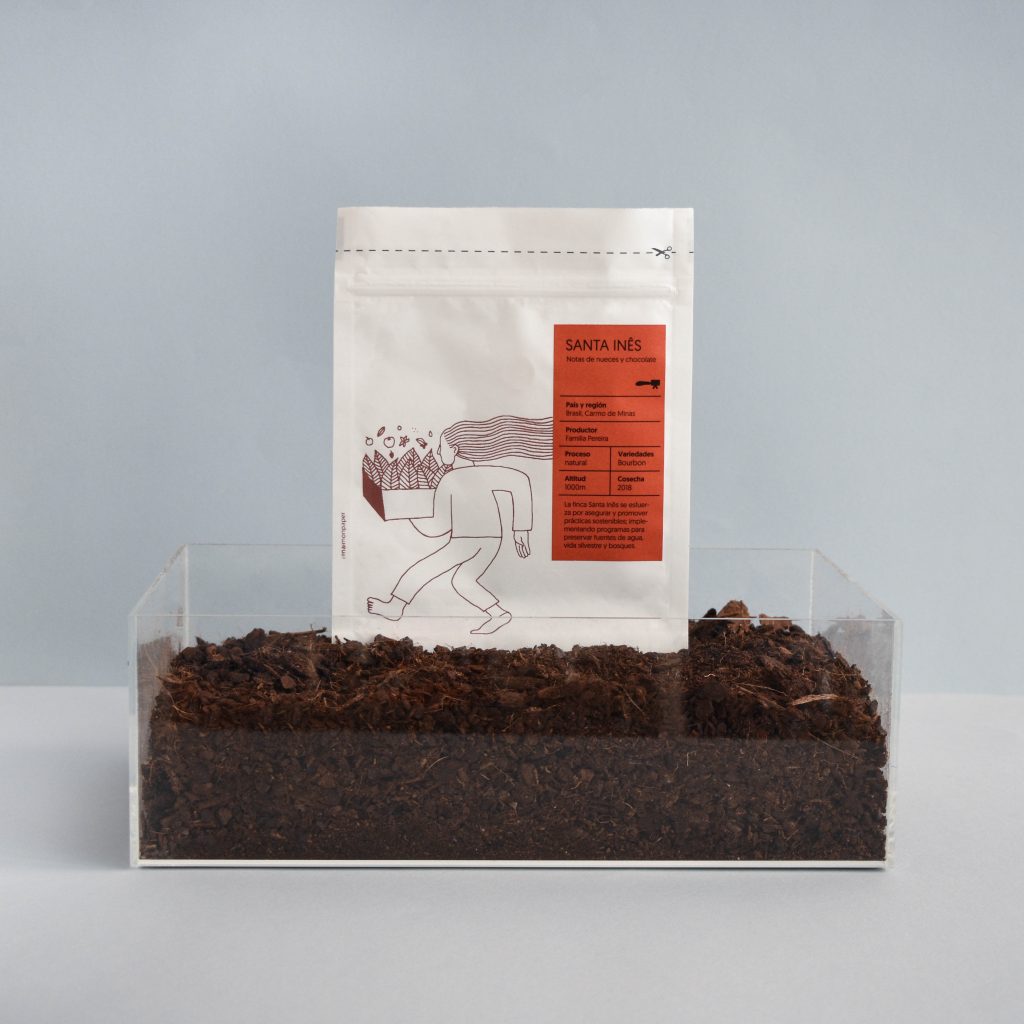
SCOBY: the plastic competitor
MakeGrowLab – a design and ecological consulting studio based in Poland – is attempting to change the packaging game by further developing SCOBY packaging from materials grown from agricultural waste that is durable
and most importantly, compostable.
First designed as a student project by Rosa Janusz, SCOBY (Symbiotic Culture of Bacteria and Yeast), she was joined in 2016
by Josh Brito to compose MakeGrowLab. The next challenge was then to develop this solution at an industrial level to make it financially competitive with plastic.
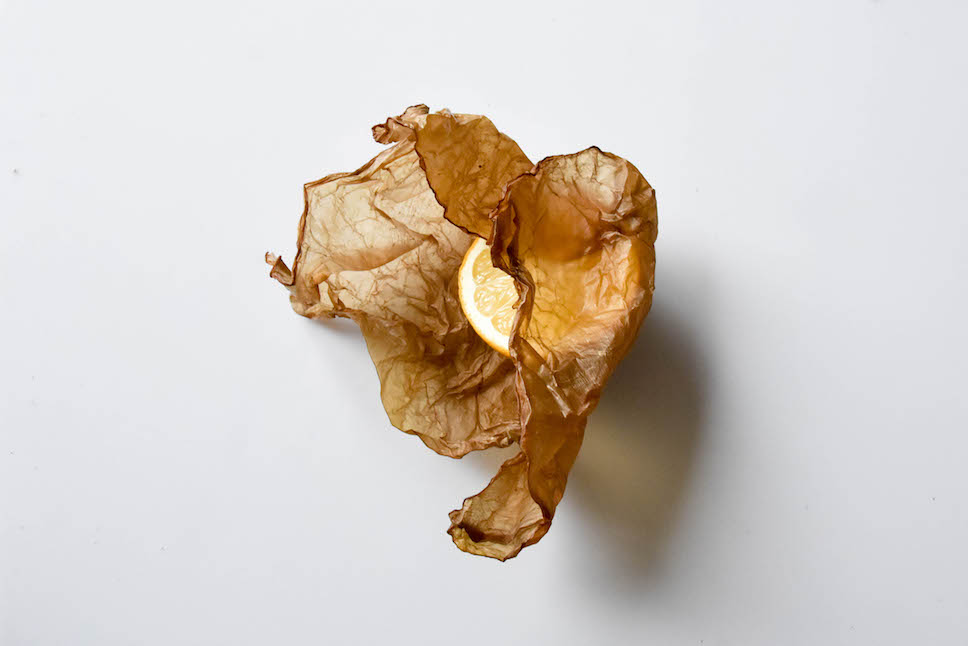

Biopak: closing the loop by dealing with the packaging afterlife
For this australian brand, solving the material challenge was only part of the solution, and especially in the growing sector of takeaway food where a lot of single-use plastic are used and discarded everyday.
Recycling is also complicated due to contamination caused by food residues. Biopak’s solution was non only to develop packaging made from renewable plant-based materials, but also to develop the logistic to collect and compost these packaging by collaborating with local enterprises. Biopak started to develop itself on european, asian and
american markets, so far not coupling their products with the same compost service than in Australia, maybe soon?
« By collecting Biopak’s compostable packaging, we are ensuring that it is composted, rather than going to landfill where it would release the potent greenhouse gas, methane.”
Loren Walker, Reclaim, supplier of recyclable resources in New Zealand
Pros: Allows to close the loop, the material decay produces new nutrient-dense compost to feed new life and regenerate.
The packaging are plant-based, so made from plants which are going to use CO2 when they grow.
Cons: Composting at home can be complicated, not everyone has the space to make compost or the use for it.
And this solution is not powerful enough to break PLA bioplastics.
The best solution is to develop industrial composting services.
4/ Reuse, refill
« Reusable packaging is a critical part of the solution to eliminate plastic pollution. As part of the New Plastics Economy Global
Commitment, over 350 organisations have recognised that, wherever relevant, reuse business models should be explored to reduce the need for single-use plastic packaging.”« Reuse, rethink packaging », Ellen Mac Arthur Foundation
Ok, there you see yourself keeping tons of glass jars, tote bags and diverse containers that you would have to storage and bring with you every time you go shopping… Well the packaging reuse strategy of course is more than that. I won’t go to much in detail on this part, as I would instead recommend you to go on the Ellen Mac Arthur Foundation to download their « Reuse, rethinking packaging » guide.
Loop: a new way to shop, waste-free
Loop is an online and physical store shopping facility developed by TerraCycle that features products in premium reusable packaging from well-known brandowners such as P&G, Nestlé, PepsiCo, Unilever, etc. The Loop platform streamlines returns for the user by offering delivery and pickup of products and empty packaging, and removes hassle for the brand owner by
taking care of reverse logistics, cleaning, sanitation, and redistribution.
All products come in high-quality, durable packaging that improves the user experience.
Loop has partnership with with leading retailers from grocery to restaurant chains to beauty stores and many more in USA, United Kingdom, France, Canada, Germany and Japan, and is currently looking for new markets.
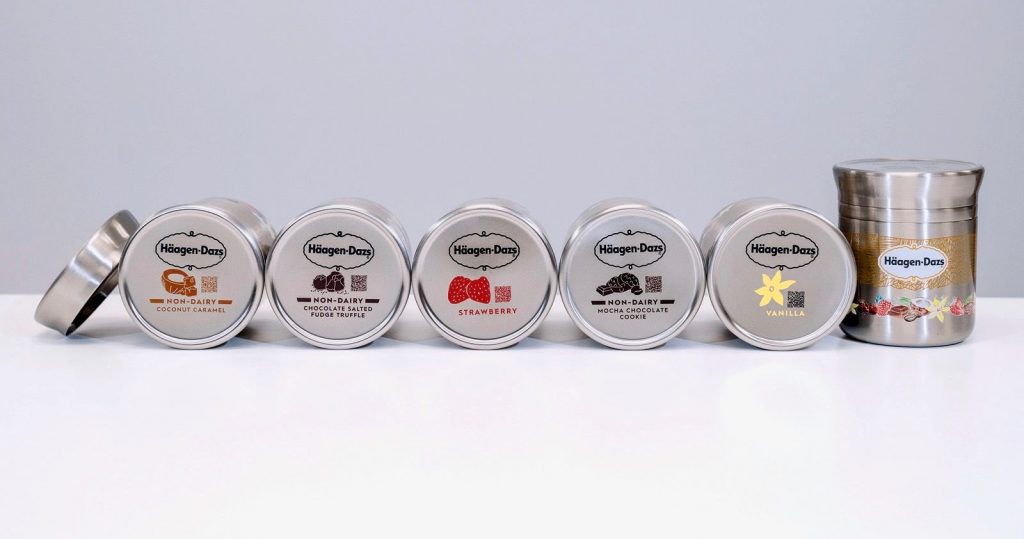
Pros: According to the Ellen Mac Arthur Foundation report « Reuse… », this way to deal with packaging can cut cost in tern of production and transportation, improve customer experience and build brand loyalty whith better designed and more conscious packaging .
Cons: The market is still in developement and customers have to get more and more used to this process.
Conclusion
This article was the occasion to showcase case studies of solutions which are now developed at an industrial level, and which are valid alternatives to plastics. It was interesting also to demonstrate that sustainable solutions can be and even are already implemented by big firms, but also by SMEs.
Of course, designers, engineers, product designers, industrials worldwide are still working and researching new strategies or materials. But time is running out…
My personal conviction is that the responsibility to make a systemic change in packaging has to be shared by consumers and by food industry actors, and by governments all together.
But once again, packaging designers have to be formed and acknowledge of the range of possibilities and opportunities, because I also think that the design phase is and will be more and more crucial if we want to be be up to the task we are facing now.
PS: Stay tuned for a most detailed article about recycling 😉

